
Academic progress
Prof. Bin Wang and Prof. Zhiwen Li's team conducts a series of studies to develop experimental analysis methods for various environmental substances found in human biological samples
The harmful effects of environmental pollutants on human health have become a significant global concern. These pollutants include polycyclic aromatic hydrocarbons (PAHs), organochlorine pesticides (OCPs), polychlorinated biphenyls (PCBs), polybrominated diphenyl ethers (PBDEs), and toxic metals. They primarily originate from industrial production, agricultural activities, and fossil fuel combustion, and are widely present in the atmosphere, water bodies, soil, and food. Long-term exposure may lead to endocrine disruption, reproductive system abnormalities, neurological damage, weakened immune function, and even an increased risk of cancer. Additionally, the metabolites produced by these pollutants in the body may also significantly impact human health. Therefore, accurately measuring the exposure levels of organic pollutants and metal(loid)s, as well as the concentration of key metabolites in the population, is crucial for assessing the impact of environmental exposure on human health.
In the real world, humans face complex exposure to multiple pollutants, which can easily diffuse and distribute widely throughout the body once they enter. Due to the complex matrix of biological samples, developing methods for accurately measuring target pollutants is challenging. For instance, the available sample volume of human biological specimens is usually limited, the pre-treatment workload for experimental analysis of biological samples is substantial, and the sample size in environmental epidemiology studies is often large. This necessitates that the relevant pre-treatment methods be as rapid and efficient as possible.
To address these challenges, Peking University Institute of Reproductive and Child Health at the School of Public Health, has undertaken a series of initiatives. These include the simultaneous determination of PAHs and their metabolites, monohydroxy-PAHs (OH-PAHs), in various biological samples such as hair, blood, and urine; the simultaneous measurement of multiple persistent organic pollutants (including PAHs, OCPs, PCBs, and PBDEs) in serum samples; the simultaneous detection of typical halogenated endocrine disruptors (such as PAHs, PBDEs, OCPs, and some hydroxy metabolites) and metal(loid)s in hair; and the simultaneous measurement of PAHs, nicotine, cotinine, and metal(loid)s in hair. The development and application of these methods provide reliable technical support for subsequent environmental epidemiology studies with different objectives, aiding in a more comprehensive understanding of the impact of pollutants on human health.
Series of Work (1): Establishing a Framework for the Simultaneous Analysis of Polycyclic Aromatic Hydrocarbons and Their Monohydroxy metabolites in Various Biological Samples (Hair, Blood, Urine) (Cover Article)
First affiliated institution: Peking University
Journal: Environmental Science Processes & Impacts
Article information: Jia X, Long M, Pang Y, An H, Jin Y, Jiang J, Li Z*, Wang B*. Exposure biomarker profiles of polycyclic aromatic hydrocarbons based on a rat model using a versatile analytical framework. Environ Sci Process Impacts. 2024 Aug 14;26(8):1268-1280. doi: 10.1039/d4em00109e. PMID: 38817199.
Main page: https://pubs.rsc.org/en/content/articlelanding/2024/em/d4em00109e
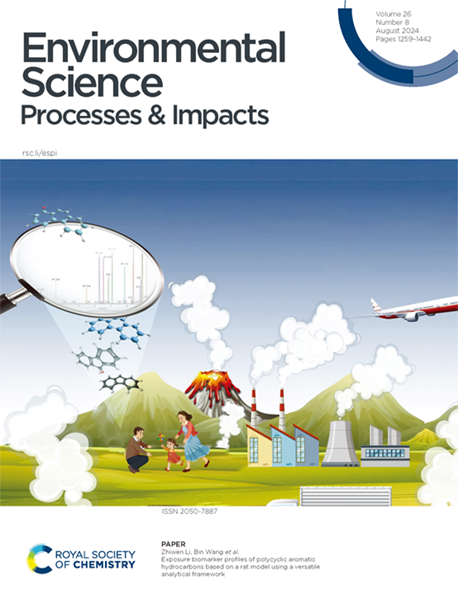
Figure 1. Journal Cover
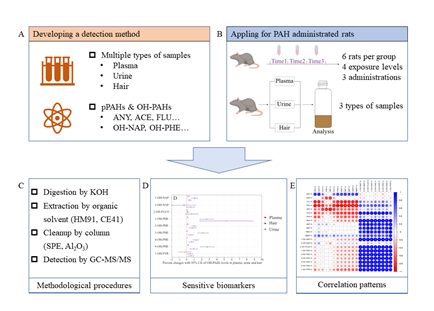
Figure 2. Framework for the Analysis of Biomarkers of Polycyclic Aromatic Hydrocarbon (PAHs) Exposure
The research team published a cover article in the journal Environmental Science: Processes & Impacts (Figure 1), presenting a pre-treatment and detection method for the simultaneous analysis of PAHs and their monohydroxy metabolites in biological samples. This method was applied to PAH-exposed rats to identify sensitive biomarkers of PAH exposure (Figure 2). The study provides a versatile method applicable to various biological specimens, enabling the simultaneous analysis of parent PAHs and OH-PAHs, significantly reducing sample volume and pre-treatment costs.
Series of Work (2): Development of a Method for the Simultaneous Determination of Polycyclic Aromatic Hydrocarbons, Organochlorine Pesticides, Polychlorinated Biphenyls, and Polybrominated Diphenyl Ethers in Serum Samples
First affiliated institution: Peking University
Journal: Environmental Pollution
Article information: Jia X, Yin S, Xu J, Li N, Ren M, Qin Y, Zhou J, Wei Y, Guo Y, Gao M, Yu Y, Wang B*, Li Z. An efficient method to simultaneously analyze multi-class organic pollutants in human serum. Environ Pollut. 2019 Aug;251:400-406. doi: 10.1016/j.envpol.2019.05.008. Epub 2019 May 3. PMID: 31100571.
Main page: https://www.sciencedirect.com/science/article/pii/S0269749118353600?via%3Dihub
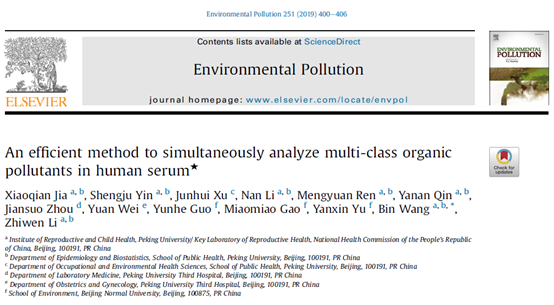
The extent of human exposure to various organic pollutants (OPs), including PAHs, OCPs, PCBs, and PBDEs, can be determined by measuring their concentrations in human serum. However, large-scale measurement of such a wide range of compounds in serum poses challenges in terms of efficiency and cost. The team led by Prof. Wang Bin at the School of Public Health, Peking University, has developed an efficient method for extracting and purifying serum samples. This method utilizes gas chromatography-mass spectrometry (GC-MS) to simultaneously quantify the aforementioned four types of OPs (Figure 3). The approach significantly reduces experimental costs and allows for the efficient batch processing of serum samples, making it more suitable for epidemiological studies.
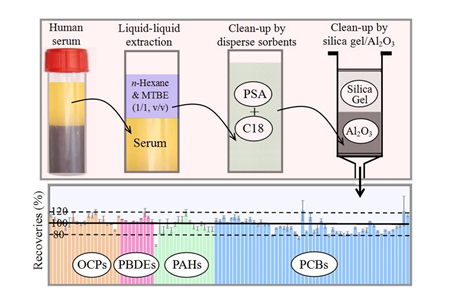
Figure 3: Illustration of the Simultaneous Determination of Multiple Organic Pollutants in Serum
Series of Work (3): Development of a Method for the Simultaneous Determination of Typical Halogenated Endocrine Disrupting Chemicals (Polychlorinated Biphenyls, Polybrominated Diphenyl Ethers, and Organochlorine Pesticides, along with Hydroxylated Metabolites) and Metal(loid)s in Human Hair
First affiliated institution: Peking University
Journal: Science of the Total Environment
Article information: Ren M, Jia X, Shi J, Yan L, Li Z, Lan C, Chen J, Li N, Li K, Huang J, Wu S, Lu Q, Li Z*, Wang B*, Liu J. Simultaneous analysis of typical halogenated endocrine disrupting chemicals and metal(loid)s in human hair. Science of the Total Environment. Volume 718, 2020, 137300, https://doi.org/10.1016/j.scitotenv.2020.137300
Main page: https://www.sciencedirect.com/science/article/abs/pii/S004896972030810X
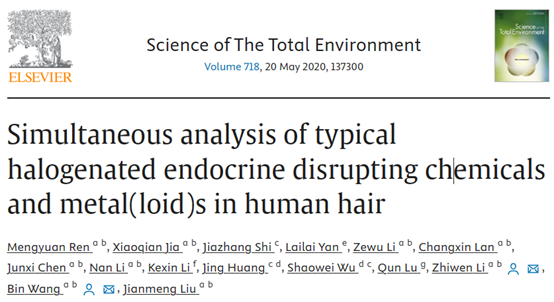
The research team has developed an experimental analytical method for the simultaneous determination of various environmental endocrine-disrupting organic compounds and inorganic metal(loid)s using a small amount of hair samples. This method effectively removes surface contamination from hair to a certain extent, with good recovery rates for hair exposure biomarkers (80–120%). Additionally, the authors conducted a cross-sectional study as an example, using the method to measure the levels of exposure biomarkers in the hair of pregnant women, thereby validating the feasibility and effectiveness of the method (Figure 4).
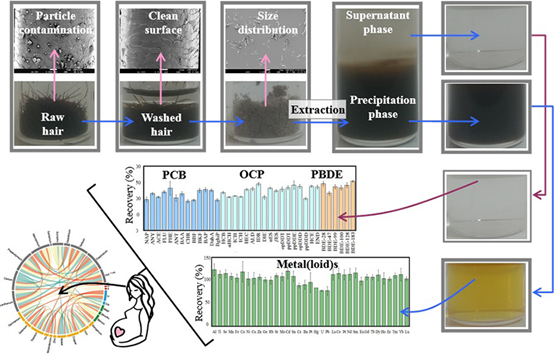
Figure 4: Development of Hair Analysis Method for Assessing Human Exposure Levels to Environmental Endocrine-Disrupting Organic Pollutants and Metal(loid)s
Series of Work (4): Development of a Pretreatment Method for the Simultaneous Determination of Polycyclic Aromatic Hydrocarbons, Nicotine, and Cotinine in Hair Samples
First affiliated institution: Peking University
Journal: Environmental Pollution
Article information: Li Z, Wang B*, Ge S, Yan L, Liu Y, Li Z, Ren A. A simultaneous analysis method of polycyclic aromatic hydrocarbons, nicotine, cotinine and metals in human hair. Environ Pollut. 2016 Dec;219:66-71. doi: 10.1016/j.envpol.2016.09.045.
Main page: https://www.sciencedirect.com/science/article/pii/S0269749116312982?via%3Dihub
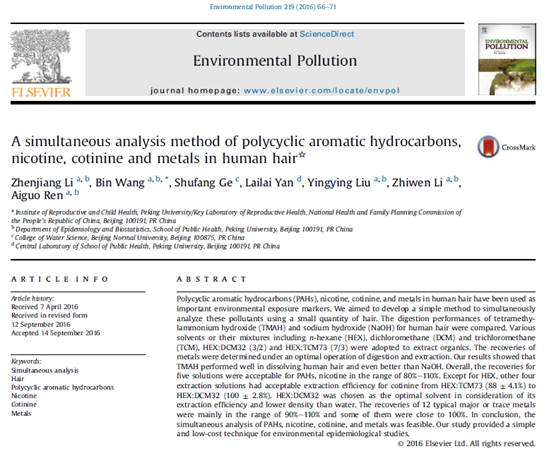
Figure 5: Development of a Pretreatment Method for the Simultaneous Determination of Polycyclic Aromatic Hydrocarbons, Nicotine, and Cotinine in Hair Samples
The research team conducted extensive studies and trials, ultimately selecting an organic base as the digestion solution and a mixed solvent with both polar and non-polar properties as the extraction agent. They developed a simple pretreatment method to simultaneously analyze PAHs, nicotine, cotinine, and metal(loid)s using a small amount of hair (Figure 5). This study provides a simple and low-cost analytical technique for environmental epidemiological research. The methodology has also been granted a national invention patent (Patent Title: Pretreatment Method and Kit for Simultaneous Analysis of Organic Pollutants and Metal(loid)s in Hair Samples, Patent Number: 201610321913.2).
Summary and Outlook:
Accurate, efficient, and low-cost experimental analytical techniques are crucial for etiological screening in environmental epidemiology. The analytical techniques developed by this research team have supported the execution of several national-level projects and have been widely cited and applied by peers both domestically and internationally. We anticipate that these methods will play a key role in broader environmental and health research, providing scientific support for the protection and improvement of human health.
Introduction to Major Team Members:

Bin Wang, Associate Professor/Researcher with tenure at the Institute of Reproductive and Child Health, School of Public Health/the College of Urban and Environmental Sciences, Peking University. His main research areas include environmental health, exposomics big data, and artificial intelligence. He employs multidisciplinary research methods to elucidate the impacts and mechanisms of environmental pollution exposure on reproductive health, and to construct health risk assessment models. To date, he has led four projects funded by the National Natural Science Foundation of China (General and Youth Funds) and played a key role in three national key R&D Program projects. As the first or corresponding author, he has published 56 papers in international authoritative journals such as Environmental Health Perspectives, Environmental Science & Technology, and The Innovation, with an H-index of 45 and over 6,500 citations. He serves as an associate editor for the top journal in the field of environmental health, Environmental Science & Technology, since August 2024. He has developed undergraduate curriculum reform courses "Exposomics," graduate curriculum reform courses "Environmental Exposomics," and the global health international advanced public health master's course "Environment & Health." Additionally, he is the leader of the "Environment and Population Health" group on the China Cohort Consortium platform and the deputy secretary-general of the Environmental and Reproductive Health Committee of the Environmental Mutagen Society. He has received the Beijing Preventive Medicine Association's Second Prize for Science and Technology and the title of "Outstanding Individual in the National Scientific and Technological System for Fighting COVID-19."

Zhiwen Li, Professor/Researcher at the Institute of Reproductive and Child Health, School of Public Health, Peking University. He is mainly engaged in epidemiological research on the impact of the environment factors on birth defects, preterm birth, and other adverse pregnancy outcomes, as well as women's health. He has led eight projects funded by the National Natural Science Foundation, national key R&D projects, and provincial and ministerial-level projects, and has been a key participant in two national key R&D projects. He has published over 120 papers as the first or corresponding author in international authoritative journals such as J Hazard Mater, Environ Int, and Int J Epidemiol. He has developed graduate courses "Reproductive and Perinatal Epidemiology," "Typical Research Cases in Reproductive Health," and the undergraduate course "Birth Defects and Their Prevention." He has participated in teaching the graduate course "Informatization Management and Mining Utilization of Medical Big Data" and the undergraduate course "Autism Spectrum Disorders." He serves as Chair of the Environmental and Reproductive Health Branch of the China Eugenics Science Association, Deputy Chair of the Environmental and Reproductive Health Professional Committee of the Chinese Environmental Mutagen Society, and Deputy Chair and Secretary-General of the Children's Brain Science and Brain Health Promotion Professional Committee of the China Maternal and Child Health Association. He has received the Beijing Preventive Medicine Association's Second Prize for Science and Technology and the Third Prize of the Huaxia Medical Science and Technology Award. He holds 1 national invention patent and two utility model patents.

Xiaoqian Jia, earned her Ph.D. from the Institute of Reproductive and Child Health at the School of Public Health, Peking University, and subsequently remained at the institution for a position. Her primary research focus is on reproductive health epidemiology, with special attention to the environmental causes and mechanisms of gestational diabetes and neural tube defects. She has been involved in the establishment of birth cohorts and the development of methods for detecting multiple environmental pollutants in biological samples. As the first author, she has published seven papers in journals such as The Innovation (IF = 32.1), Environment International (IF = 11.8), and Environmental Pollution (IF = 8.9). She has participated as a member in a total of five projects, including the National Key R&D Program of the Ministry of Science and Technology and general projects of the National Natural Science Foundation.

Mengyuan Ren, earned her Ph.D. from the Institute of Reproductive and Child Health at the School of Public Health, Peking University, and is currently a postdoctoral researcher at Emory University in the United States. Her primary research focus is on assessing reproductive health risks associated with human exposure to mixed environmental pollutants. She is skilled in constructing reproductive health risk assessment and prediction models based on multi-omics data. To date, she has published 6 papers as the first author in journals including The Innovation (IF = 32.1), Environment International (IF = 11.8), Science of the Total Environment (IF = 9.8), and Hygiene and Environmental Health Advances. She has participated as a member in a total of 5 projects, including general projects of the National Natural Science Foundation, the National Key R&D Program of the Ministry of Science and Technology, and international scientific and technological innovation cooperation projects. She is a core member in the development of the ExposomeX platform (http://www.exposomex.cn/).

Zhenjiang Li, completed both his bachelor's and master's degrees at the School of Public Health, Peking University, and earned his Ph.D. from Emory University in the United States. He is currently a postdoctoral researcher at the Keck School of Medicine, University of Southern California. His primary research focus is on using multi-omics bioinformatics technologies, including metabolomics, proteomics, transcriptomics, and epigenomics, to explore the in vivo processes of common environmental pollutants and the bodily responses they trigger. This research aims to elucidate the impact of pollutants on the health outcomes of specific populations such as pregnant women and the elderly. To date, he has published 9 papers as the first author in journals including Alzheimer’s & Dementia (IF = 12.9), Environmental Science & Technology (IF = 11.4), and Science of The Total Environment (IF = 9.8). He has participated as a member in several R01 research grant projects funded by the National Institute of Environmental Health Sciences in the United States.
Contributed by | Professor Bin Wang's Team (Peking University)
Reviewed by | Bin Wang

